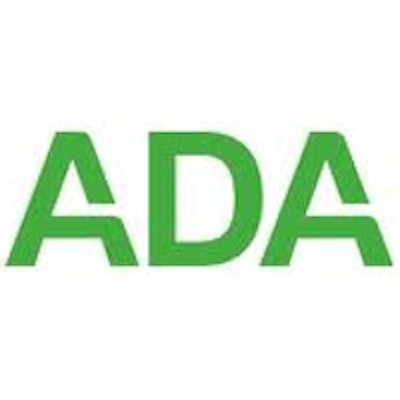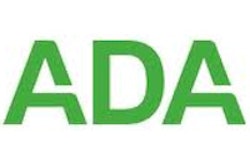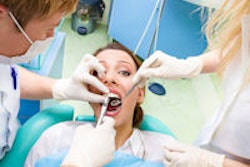
Midlevel providers can help dentists expand their Medicaid practices without shrinking their private-pay practices, according to one participant in an ADA webinar on September 29 about reducing the gap in dental care utilization.
"Dentists have expanded supply in part by relying on dental hygienists and other allied dental professionals to provide more care and have expanded their Medicaid practices without shrinking their private-pay practices at the same time," said Julia Paradise, associate director of the Kaiser Commission on Medicaid and the Uninsured for the Kaiser Family Foundation.
The webinar discussed a new research brief by the ADA Health Policy Institute that found the gap in dental care utilization in the U.S. narrowed between children enrolled in Medicaid and those with private dental benefits from 2005 to 2013, but a large gap remains between adults in those categories.
Alaska and Minnesota, which have licensed dental therapists, have the smallest gap of dental care utilization between privately insured adults and adults on Medicaid, Paradise noted. The two states have also expanded their Medicaid programs under the Patient Protection and Affordable Care Act (ACA).
"When there is an incentive and a market to capture, dentists are using dental hygienists and others and could do that more," she said. "That's what has happened in primary care, as more states expand the scope of practice for nurse practitioners to permit them to practice at the top of their license. It is a model for what we might look for in the dental arena."
Paradise's comments were her own. The ADA has steadfastly opposed allowing MLPs to do restorations and extractions, and has released reports that concluded the MLP model is not economically realistic or sustainable.
Marko Vujicic, PhD, chief economist and vice president of the ADA Health Policy Institute, said the gap in dental care between people on Medicaid and those with private insurance may decrease as states change their laws.
"The gap will decrease in Ohio in the near future, because the state dental practice act has been amended to allow dental hygienists to work in certain settings without the supervision of dentists, diagnosing and placing sealants in public health settings."
Medicaid spending, benefits
Dental services amounted to less than 2% of the states' total Medicaid spending, according to Paradise. Currently, 15 states cover comprehensive dental benefits for adults on Medicaid, and 17 states provide limited dental benefits, she said.
"It's important to remember that in states that [have] adopt[ed] the ACA Medicaid expansion, coverage for newly eligible adults is almost entirely federally funded, making the inclusion of comprehensive dental benefits for Medicaid adults a pretty low-cost proposition," Paradise noted.
The ACA was a "game changer" in providing enhanced federal matching funds, Vujicic agreed.
A recent ADA report suggested that expanding Medicaid dental coverage for adults may also positively influence dentists' participation in the program, potentially expanding the supply of dental care as demand increases in Medicaid, Paradise said.
“There's more focus on integrated care ... that understands that the mouth and the emotions are connected to the rest of the body.”
The report found that in states that expanded adult dental Medicaid benefits, dentists' participation in the program and the supply of services to Medicaid beneficiaries increased, visits for other patients didn't decline, and dentists' incomes rose, she noted.
"There's evidence in states like Maryland, Connecticut, and Texas that the big reduction in the gap is being driven by what Medicaid programs have done regarding streamlining administrative procedures, outreach to patient beneficiaries, outreach to providers, as well as adjusting reimbursements," Vujicic said.
Some states have used policy innovations that were used for improving children's care and applied those lessons to adult programs, according to Andy Snyder, program manager for the National Academy for State Health Policy. Virginia has added a Medicaid benefit for pregnant women and is using the same administrative vendor and the same payment rates that were used for the Smiles For Children dental program, he said. In Colorado, lawmakers are using policies from the Children's Health Insurance Program (CHIP) for adults on Medicaid and also increasing reimbursement rates.
Iowa, which had a fee-for-service benefit for Medicaid adults, has changed to an earned-benefit model that stresses personal responsibility and preventive care, he said.
Pay based on outcomes
The desired direction of programs has become results-based rather than purchase of care, tying payments to desired outcomes, Paradise noted.
"There's more focus on integrated care, a push toward more highly integrated care that looks at the whole person, that understands that the mouth and the emotions are connected to the rest of the body," she said.
"We will see changes in payment model," Vujicic said.
Kaiser Permanente now partly reimburses its dentists for outcomes and performance measures that aren't related just to the volume of services, he noted.
"The big wild card is the new wave of consumerism in households," Vujicic said. "I think consumers and private payors -- large employers -- are really pushing an agenda to say, 'We actually want to purchase health and pay for health and reward health versus just rewarding volume.' "



















